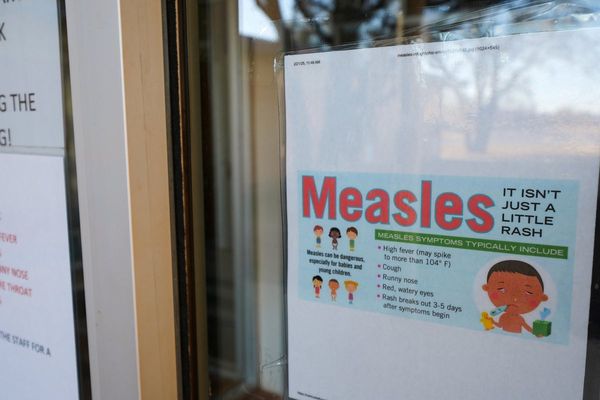
How much land would be needed for enough solar panels and windfarms to supply the world with green hydrogen?
In a story in The Australian this week, the apparent answer was about 25% of Australia’s entire land mass.
The newspaper quoted analysis from the Global Carbon Capture and Storage Institute that compared the land needed for green hydrogen production to the minuscule land required for producing blue hydrogen.
Solar and wind energy are not good for the environment.
— Rocky Ring Road Now Matt Canavan (@mattjcan) November 7, 2022
The green area is the amount of land we would need to cover with wind and solar to become a green energy "superpower".
Time to end the green energy fantasy.https://t.co/LRAbiKcazl pic.twitter.com/LkhHSw9hi3
But the claim – tweeted by Matt Canavan, a Coalition senator – comes up with a final figure several times higher than other estimates, including the previous government’s own national hydrogen strategy.
And at the same time, the report in The Australian ignored the greenhouse gas emissions from a global supply of blue hydrogen that one expert puts at more than one billion tonnes of CO2 a year.
Hydrogen 101
So what’s going on here? First, a quick hydrogen 101.
Green hydrogen uses renewable energy such as solar and wind to power electrolysers that extract hydrogen from water.
Blue hydrogen uses steam to separate hydrogen from natural gas and uses carbon capture and storage (CCS) to – at least in theory – stop most of the associated CO2 being released into the atmosphere.
The International Energy Agency (IEA) has suggested that under a global effort to reach net zero emissions, about 530Mt of hydrogen will need to be produced by 2050.
The GCCS institute, which sent Temperature Check its calculations, took that global supply figure and applied it only to Australia’s land mass.
The institute looked at the land earmarked for green hydrogen production at WA’s Asian Renewable Energy Hub and then extrapolated that to imagine the same project supplying 530Mt of hydrogen.
Dr Fiona Beck, an expert on hydrogen’s role in the low carbon energy transition, points out that back-of-the-envelope calculations like this are usually wrong.
Beck did her own calculations based on a method used for a peer-reviewed article, and found the amount of land needed to deliver 530Mt of hydrogen would be between 7% and 9% of Australia – not 25%.
The previous Coalition government’s National Hydrogen Strategy assumed an even smaller number, saying about 3% of land would be needed to supply the world with green hydrogen by 2050 (as if it needs pointing out, there’s no suggestion Australia will be the only supplier of green hydrogen in the world).
But Beck said comparing green hydrogen with blue hydrogen was like “comparing apples and oranges”. While green hydrogen would use more land, her own published work suggests blue hydrogen would have a sizeable greenhouse gas footprint.
She said even if the CCS industry could capture 90% of the emissions from the production stage of blue hydrogen, that would still release about 1Mt of CO2 for each 1Mt of hydrogen.
But Beck said if emissions from extracting and processing the natural gas before it’s turned into hydrogen were also counted, this would see blue hydrogen responsible for “a whopping 1314Mt of CO2-e in a year to make 530Mt of blue hydrogen in Australia, using 1961Mt of natural gas.”
For context, that is almost three times Australia’s current greenhouse gas footprint.
Demanding answers on gas
Despite the erroneous claims of some, it is very widely accepted that the reason Australia’s electricity prices are so high is because they are linked to international gas and coal prices that have been skyrocketing since Russia’s invasion of Ukraine.
But the chief executive of the Australian Petroleum Production and Exploration Association, Samantha McCulloch, had a nuanced answer for the ABC this week, suggesting demand for gas in Australia was helping push prices up.
She said there was “very strong demand for gas domestically” and this was being driven “by a critical role that gas is playing, particularly in the electricity sector”.
McCulloch said gas was being called on to “fill the void” when renewables and coal were not available, and offered a statistic to back up her claim.
In May, she said gas demand was 55% higher than the same month last year. It was this demand that was pushing up prices, she said, alongside the war on Ukraine.
Is this right?
According to the Australian Energy Market Operator’s quarterly report on energy demand, gas-fired electricity generation did jump 27% in April, May and June compared to the previous quarter.
But actual overall demand for gas had only gone up by 0.5% based on the same quarter last year. The rise in demand for gas for electricity generation was “largely offset” by lower demand from industry and homes, according to Aemo.
A chart shows the price of gas almost trebling after Russia’s invasion of Ukraine, rising on a trajectory that mirrored rising wholesale electricity prices.
Tristan Edis, an energy market analyst with a focus on renewables, said: “This suggestion that gas generation is substantially expanding output to ‘fill the void’ from renewables and coal doesn’t match with Aemo data on actual generation in the National Electricity Market.
“Yes coal generation has been falling over the past few years. But gas generation so far this year is also down compared to 2017 levels, by 29%. Sure gas generation in May this year was 50% up on the prior year, but this is convenient cherrypicking. It was down by almost 10% compared to where it was in May 2017.”
Edis said if anything was “filling the void left by coal” it was wind and solar, pointing to Aemo data showing that since 2017 demand for gas in the five states covered by the National Electricity Market (everywhere but the NT and WA) has actually fallen.
He said: “The only explanation for the huge rises in Australian gas prices is that they are tied to the international price for gas via LNG exports and the international price has skyrocketed.”
As a side note, Aemo also said that greenhouse gas emissions from the national electricity market hit an all-time low for the quarter, thanks to burning less coal and more renewable energy coming online.
What else has been going on with the gas industry?
On the ABC, McCulloch said the industry was projected to contribute $11bn to the Australian budget over the next four years.
But she couldn’t comment on figures that came from The Australia Institute, suggesting that since Russia’s invasion of Ukraine, companies exporting LNG from Australia had made about $26bn extra in a “war-related windfall”.







